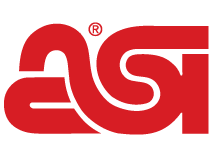News October 13, 2025
Trade Escalation Between the U.S. & China Leaves Promo Industry Looking for Clarity
Over the weekend, President Trump announced plans to increase the tariff on Chinese goods to 130%.
Key Takeaways
• President Trump announced a new 100% tariff on Chinese goods, adding to the existing 30%.
• The U.S. Trade Representative has also imposed new port fees on Chinese vessels, with a phased implementation starting this week.
• Promo leaders are struggling to navigate the unpredictable trade landscape, with many adopting a “wait-and-see” approach.
Trade negotiations between the U.S. and China are ramping up again, and the promo industry is paying attention.
On Friday evening, President Trump announced he will impose an additional 100% tariff on goods from China, on top of the existing 30% tariff on Chinese goods already in effect. The new levies were announced after Beijing added restrictions on critical rare earth mineral exports used in electronics and military fighter jets. The tariff is expected to take effect on or before November 1.
The promo industry relies heavily on China for mass production of apparel, electronics, plastic goods and stainless-steel mugs and water bottles. This latest round of tariffs could have significant implications for promo companies, and many industry execs are struggling just to keep up.
“If this goes into effect, we’re all going to have to change a lot of things around,” says Daniel Oas, CEO of High Caliber Line (asi/43442), a supplier of drinkware, apparel, tools and several other product categories. “For right now, I’m shipping as much as I can before November 1.”
Tariffs on foreign goods have increased 17.4%
since April 2025 – the highest rate in 90 years.
New Tariff Threats Add Fuel to Existing Trade Activity Between the U.S. & China
Against the backdrop of sweeping tariffs, the U.S. Trade Representative imposed port fees on Chinese vessels entering the U.S. that will begin to take effect this week, which includes a 180-day “no-fee” grace period. The fees will start at $50 per net ton for Chinese vessel owners and operators. Fees on China-built vessels from non-Chinese carriers are lower at $18 per net ton, but also include a charge per container. The fees for both Chinese and non-Chinese carriers will gradually increase each year until at least 2028.
These changes could come at a cost to importers, who rely on Chinese vessels to ship promo items into the U.S. Others say carriers plan to get a little creative to avoid the fees.
“At this time, most of the carriers that we use [have] stated that they do not plan to impose surcharges related to the port fees on China-built/China-linked vessels,” says Jing Rong, VP of supply chain & sustainability at Counselor Top 40 supplier HPG (asi/61966; Canada, asi/48886). “They will first try to avoid the fee by redeploying non-Chinese-built tonnage to U.S. lanes.”
Rong added that the grace period will afford carriers the flexibility to try different strategies, adjust routing and reposition fleets before the full cost kicks in. HPG doesn’t expect to see an immediate surcharge related to the policy until “probably mid-2026,” Rong says.
Still, the port fees add another level of complexity to already tense tariff talks with China. Between potential fees, supply chain delays and looming tariff increases, suppliers and distributors are having to make consistent adjustments to their strategy.
Promo Industry Execs Want a Consistent Message Around Tariffs, but They’re Not Getting One
As new tariffs emerge and trade negotiations between the U.S. and foreign trade partners are in flux, promo industry leaders are finding it difficult to plan their next move.
Rong, for one, is not convinced that Trump’s 100% tariff increase will actually come to fruition.
“Escalation really helps no one right now – China’s economy is still struggling, and U.S. inflation keeps creeping higher,” she says. “China’s exports were down about 7% year on year in September, and consumer confidence remains near multiyear lows. On the U.S. side, CPI was up 0.4% month over month in September, so any new tariffs would only add more fuel to inflation.”
Rong adds that these tariff threats feel more like political posturing and negotiation theater than actual policy moves. But given the unpredictable tariff landscape, she acknowledges her projections may be wrong.
Oas shares a similar sentiment, adding that “Trump says a lot of things about tariffs, so it’s hard to know what is actually going to happen.”
The stock market responded to President Trump’s tariff announcement with its most significant decline since the president’s official “reciprocal tariff” announcement in April. Over the weekend, however, Trump urged people not to worry about the tariffs.
“Don’t worry about China, it will all be fine!” he wrote in a Truth Social post. As a result, Wall Street futures climbed back up, with the Dow up 448 points, the S&P 500 up 89.75 points and Nasdaq up 462 points as of Monday morning according to Reuters.
Daniel Baker, director of marketing at BCG Creations (a subsidiary of HPG), told ASI Media that he hopes to see President Trump’s negotiations result in a more stable trade policy.
“Stability on economic policy makes for better business outcomes,” Baker said.
For now, many promo leaders are adopting a “wait-and-see” strategy until they receive more concrete guidance on whether these new tariffs on Chinese goods will take effect and when. The Supreme Court will hear a case to determine the legality of Trump’s sweeping tariffs later this term. Since April, the levies have increased by 17.4% – the highest rate since 1935.
